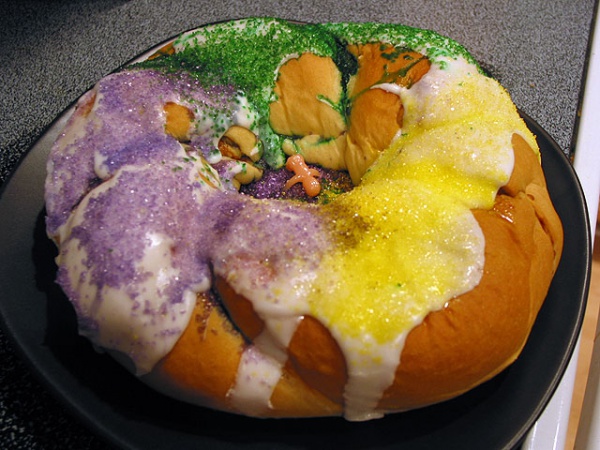Facts About King cake
A king cake is a festive treat steeped in rich history, enjoyed during the Epiphany festival and pre-Lenten celebrations such as Mardi Gras across various countries. This tradition dates back approximately 300 years and has since evolved into numerous versions, each reflecting the cultural nuances of different nations.
In the United States, particularly in New Orleans, king cakes are an integral part of the Carnival season. New Orleanians alone consume hundreds of thousands of these cakes each year. A distinct feature of the king cake is the hidden figurine, commonly referred to as a fève. The individual who finds this trinket is accorded special privileges and responsibilities.
The origins of the king cake are intertwined with the story of the Magi visiting the Christ Child on Epiphany. This tradition extends through the Carnival season up until Fat Tuesday. Various countries, including France, Portugal, Spain, Latin America, Greece, Cyprus, and Bulgaria, have their unique iterations of the cake, each accompanied by distinct customs and ingredients.
In the U.S., particularly along the Gulf Coast, the king cake tradition was introduced by Basque settlers in the 18th century. Today, it is a central element of Mardi Gras celebrations, with a wide array of styles and fillings available. In New Orleans, king cake parties and the quest for the hidden baby figurine are cherished traditions during the Carnival season.
Finding the hidden trinket, often a baby figurine, in the king cake is said to bring luck and prosperity. The fortunate finder is typically expected to host the next party or purchase the next cake. The cake is adorned with vibrant colors—purple for justice, green for faith, and gold for power—which symbolize the three kings who visited Jesus.
In the United Kingdom, the king cake tradition was known as the Twelfth Cake and was part of selecting a "King" and "Queen" during the Twelfth Night celebration. However, its popularity waned during the Victorian era and was ultimately superseded by the Christmas cake.
King cakes are generally made from ingredients such as milk, butter, yeast, sugar, eggs, spices, and colored sugar crystals for frosting. The bright colors and decorations are not merely ornamental; they carry symbolic meanings linked to Christian traditions and the Epiphany story.

 Germany
Germany